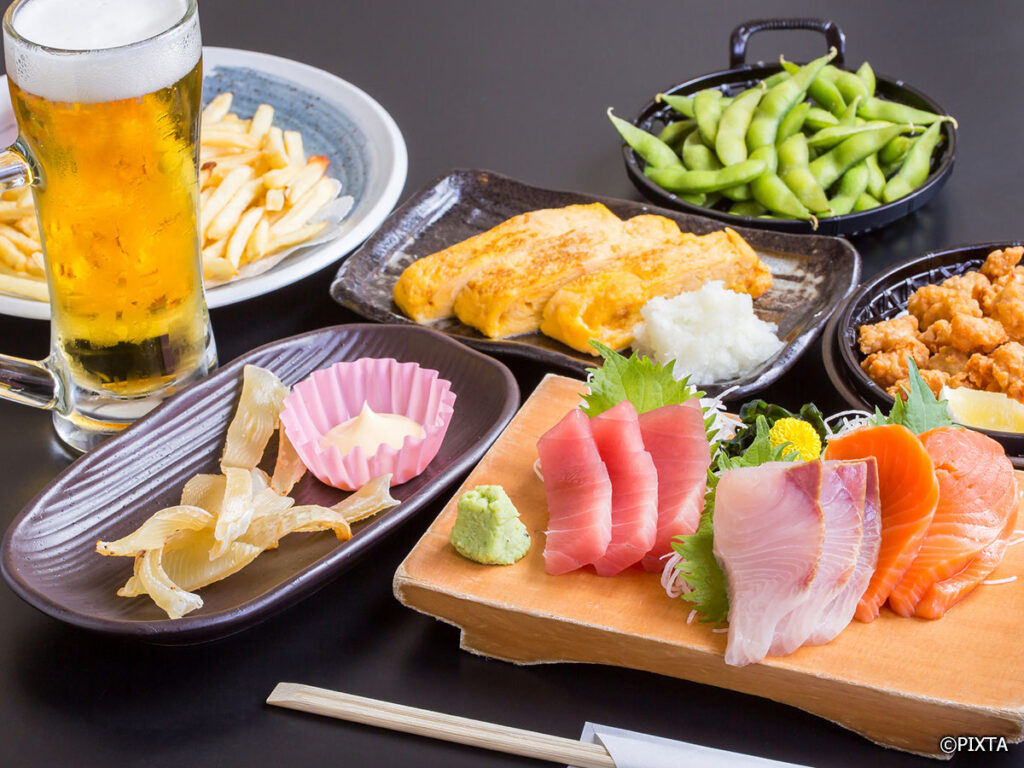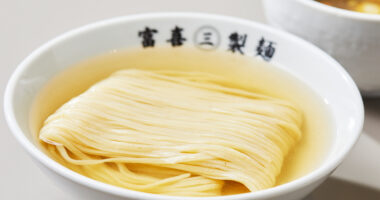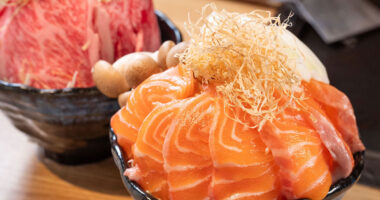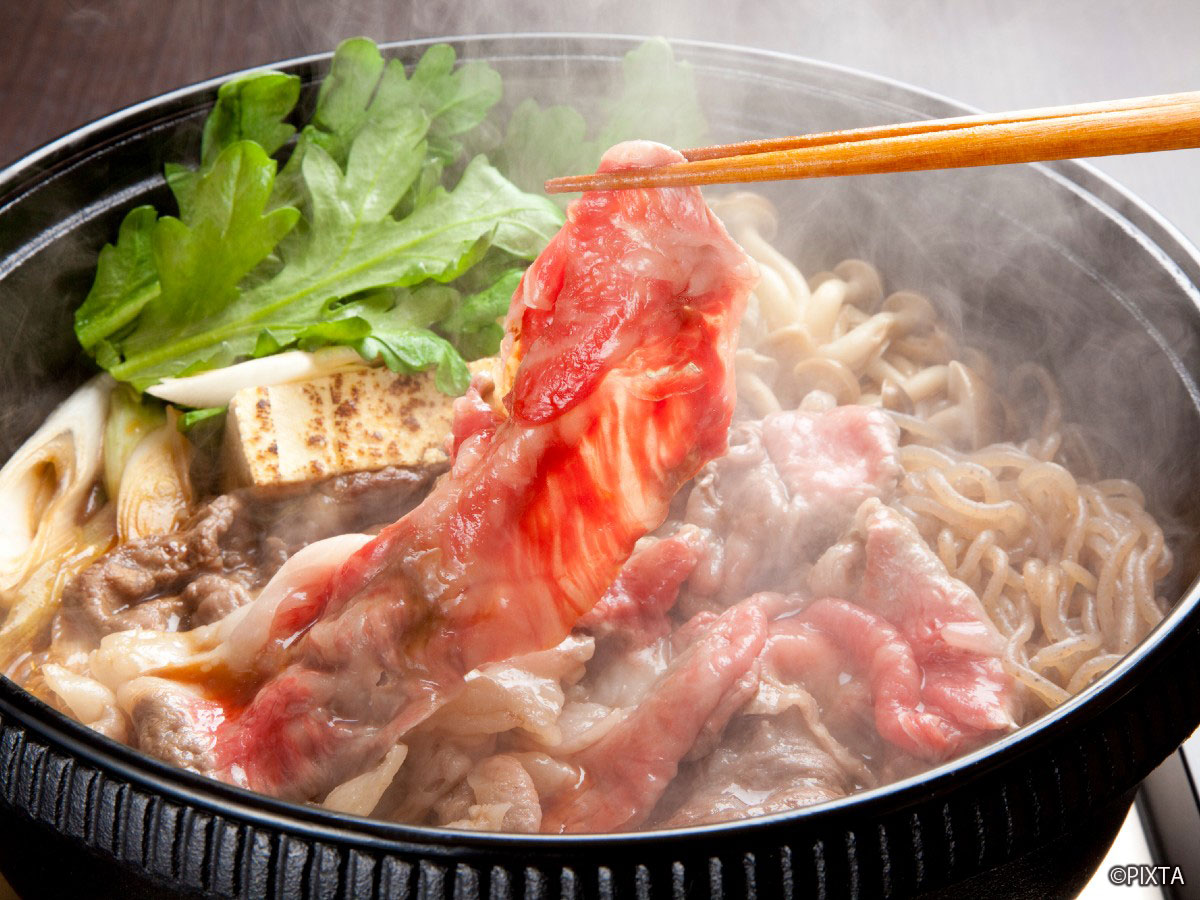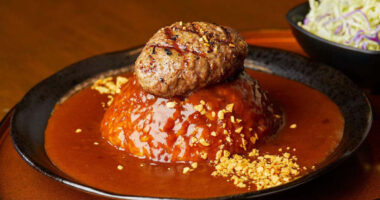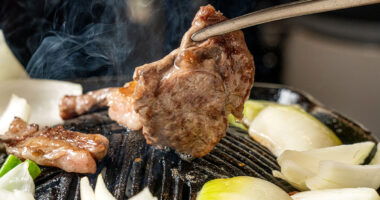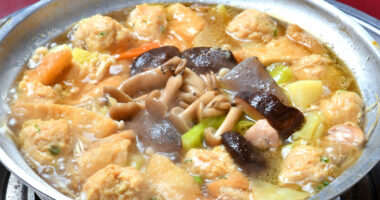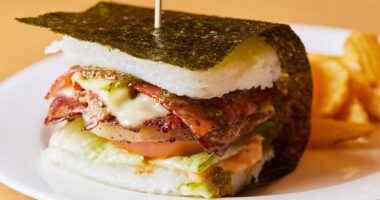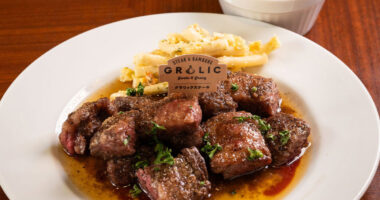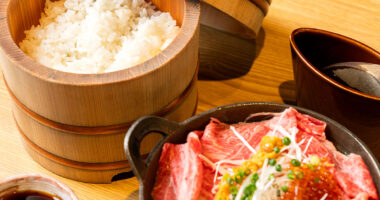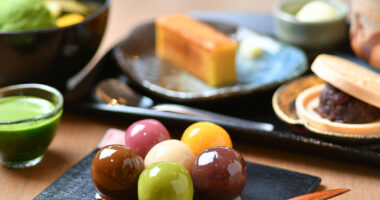There’s something uniquely captivating about a culture’s approach to social dining and drinking. In Japan, nowhere is this more apparent than at an 居酒屋 izakaya, the nation’s version of a casual gastropub. With its wide variety of food and drink offerings, the izakaya embodies the Japanese ethos of camaraderie and relaxation after a day’s work. Understanding izakaya dining culture can provide a valuable window into Japan’s approach to food, drink, and social interaction.
What is an Izakaya?
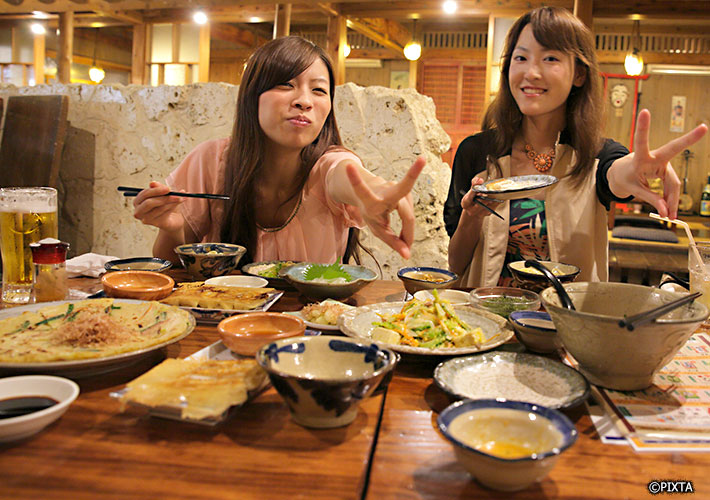
Having fun with good food and drinks at an izakaya.
An izakaya is a type of informal Japanese bar that serves a variety of alcoholic drinks and accompanying food. Known for their warm, inviting ambiance, izakaya establishments are popular among locals and tourists alike for their affordable menu items, which range from small tapas-style dishes to more substantial fare. Whether you’re winding down after work or embarking on a culinary adventure, an izakaya provides the perfect setting to indulge in Japan’s rich food and drink culture.
Where to Find Izakayas
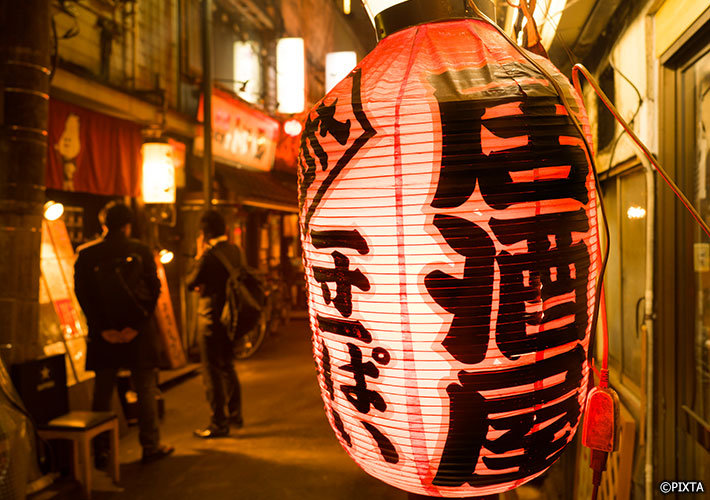
If you see the kanji 居酒屋 on a red lantern or sign outside, you can’t go wrong.
Izakayas can be found throughout Japan, from bustling city streets to quiet countryside towns. They can be standalone establishments, part of larger chains, or tucked away in the corners of department stores. Street-side izakayas sometimes have red paper lanterns, known as 赤提灯 akachōchin, hung at the entrance, a symbol associated with these casual pubs. Remember, izakayas are as much about the social experience as they are about food and drink, so go with a group if you can!
Types of Izakaya Food and Drinks
An izakaya’s menu is a testament to the breadth of Japanese cuisine. Though specific offerings vary, here are some popular categories of food and drink you can expect to find:
Fried Foods: For many izakaya, the heart of the menu is fried foods, radiating irresistible aromas and textures. 唐揚げ karaage, succulent chunks of chicken marinated and deep-fried to perfection, is a universal favorite. You’ll often find コロッケ korokke croquettes, breaded and deep-fried patties of creamy mashed potato and minced beef or crab meat in cream sauce. Even fries have found their place on the izakaya menu, offering a comforting familiarity amidst the diverse selection. You can read more in our articles on karaage and other deep-fried Japanese treats.
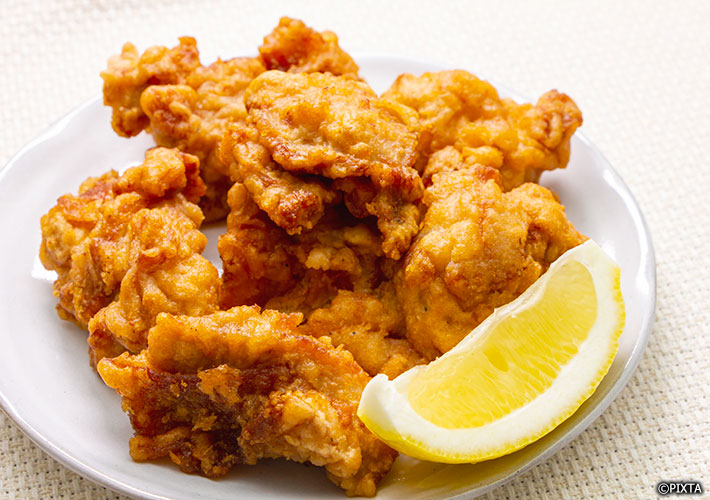
Karaage, the Japanese equivalent of fried chicken, is a favorite at izakayas.
Grilled Foods: Grilled dishes are a cornerstone of izakaya offerings. Yakitori, skewered chicken pieces grilled over charcoal, deliver smoky, savory notes that pair excellently with drinks. 焼き魚 yakizakana, or grilled fish, is another staple, underscoring Japan’s deep-seated marine food culture. Fish such as ホッケ hokke, or Okhotsk ataka mackerel, are popular choices, their simple salt-grilling preparation highlighting the intrinsic flavors of the seafood. For an in-depth look at these grilled delights, see our articles on yakitori and yakizakana.
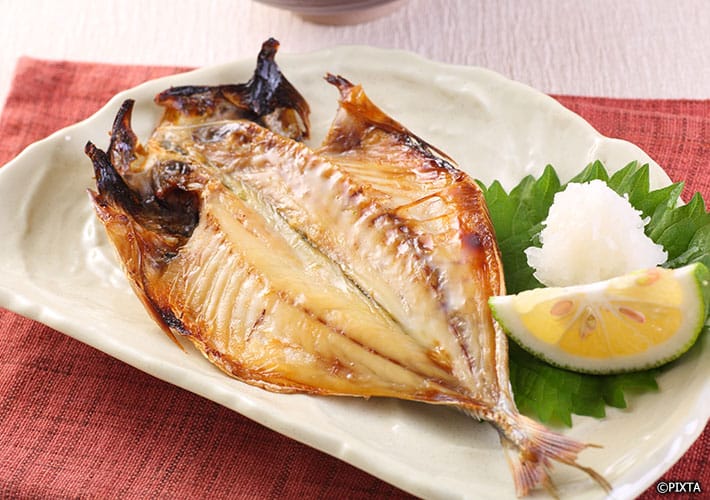
Grilled fish, or yakizakana is often on the menu at an izakaya.
Seafood: An izakaya visit would be incomplete without sampling their seafood offerings. Sashimi, featuring slices of raw, fresh fish, is a quintessential izakaya dish, both for its simplicity and its showcase of Japan’s seafood bounty. For the more adventurous, there’s 塩辛 shiokara – fermented squid or other seafood, and たこわさ takowasa – raw octopus marinated in wasabi, dishes that may seem challenging but reward with their distinctive umami-rich flavors.
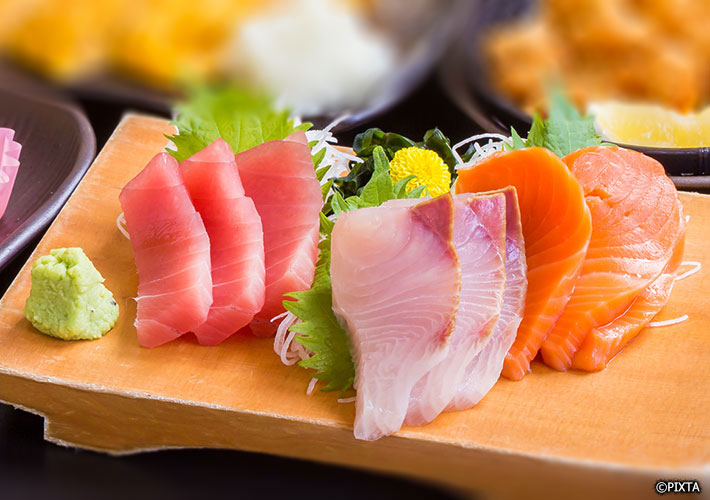
A delicious plate of sashimi at an izakaya.
Vegetables and Salads: Amidst the profusion of grilled and fried dishes, izakaya menus also feature a variety of refreshing vegetable-based options. Now a common sight outside of Japan, 枝豆 edamame (pronounced “eh-da-ma-meh” and not “ee-da-ma-mee”), lightly salted green soybeans, are a quintessential izakaya appetizer, offering a healthy, addictive nibble to start the meal. 生キャベツ nama kyabetsu, raw cabbage, typically served with a miso-based dip, and ポテトサラダ poteto sarada, potato salad, creamy and mildly sweet, provide a cooling counterpoint to the other robust dishes. もろきゅう morokyū, cucumber served with もろみ味噌 moromi miso (a sweeter, rustic form of miso paste), is a simple yet refreshing dish that offers a crunchy texture and a savory taste. For those looking for a wholesome bite, the だし巻き玉子 dashimaki tamago, a slightly sweet Japanese omelette made with dashi, and daikon salad, a refreshing salad made with grated daikon radish, are excellent choices.
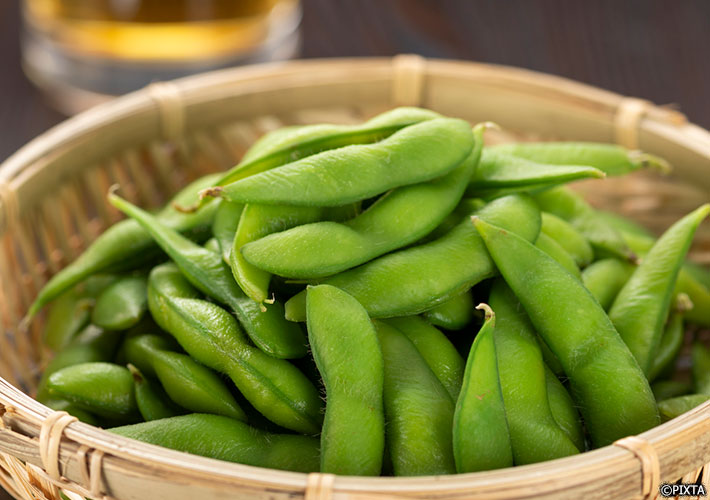
Edamame is a staple of almost any izakaya menu.
Braised Dishes: Izakaya menus often feature slow-cooked dishes for those seeking something heartier. もつ煮込み motsu nikomi, a rich stew made with tripe, and 角煮 kakuni, tender cubes of braised pork, are both warming, hearty dishes that offer comforting respite from the faster-paced izakaya selections.
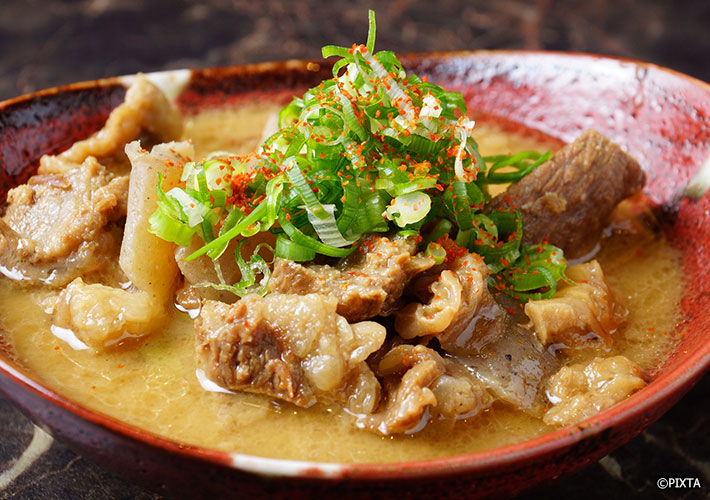
A warming and hearty dish of motsu nikomi.
Drinks: The drinks menu at an izakaya is just as diverse as the food. Beer is a classic choice, while サワー sawā sours and ハイボール haibōru highballs, both typically shochu-based, offer a refreshing alternative. 酎ハイ chū-hai, a fruity cocktail made with shochu and soda, is another popular option. Most izakayas also have a wide selection of sake and whisky. You may also find non-alcoholic beer and a selection of soft drinks if you prefer to stay sober. To learn more about Japan’s traditional spirits, sake and shochu, read our in-depth article here.
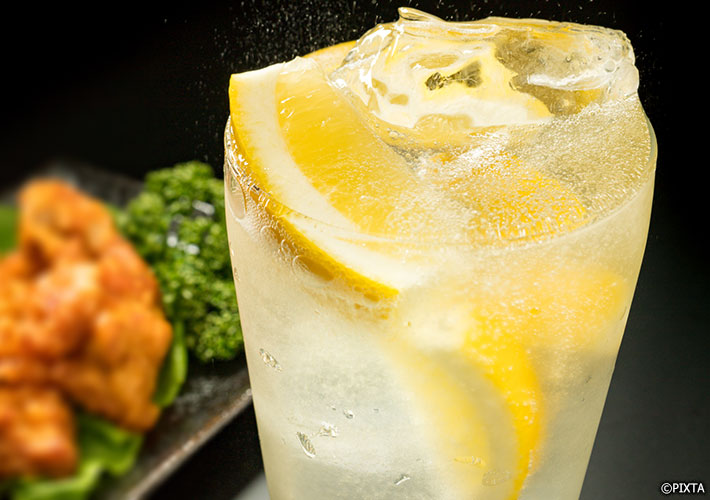
A refreshing glass of lemon sour is the perfect accompaniment to fried foods.
Prices at izakayas can vary widely depending on the establishment and the dishes ordered. Many izakayas are quite affordable, with food items typically ranging from 200 to 800 JPY, and drinks usually starting at around 300 JPY. More upscale izakayas or those in prime locations might charge a bit more. It’s always a good idea to check the menu or ask the staff if you have any concerns about pricing.
Tips For Enjoying Izakaya Food and Drinks
It is common at izakayas, especially in larger groups, for orders to be communal, with dishes shared among everyone at the table. This is a fantastic opportunity to taste a wide variety of dishes and share in the joy of discovery. For smaller groups or pairs, some izakayas may be more flexible. Always inquire about the preferred ordering system if in doubt.

Ask your waitstaff if you have questions before you order.
Many izakayas charge an お通し otōshi fee (or in the Kansai region, a 突き出し tsukidashi fee), which is essentially a seating fee that comes with a small appetizer. This practice is almost universal in izakayas, so don’t be surprised when you see an appetizer you didn’t order appear on your bill.
When it comes to payment, izakayas often accept both cash and credit cards, but it’s always a good idea to have some cash on hand. Some smaller or local izakayas may be cash-only establishments. In a large group, it’s common for the bill to be split evenly among everyone. Some izakaya may not accept separate bills at the same table, so be sure to check in advance.
In conclusion, izakayas offer an authentic taste of Japanese gastronomy and drinking culture. It’s a place to unwind, enjoy good food and drinks, and share moments with friends, colleagues, and sometimes even strangers. It truly embodies the Japanese spirit of 一期一会 ichigo ichie, or the idea that every encounter is a once-in-a-lifetime event. So, the next time you’re in Japan, don’t miss out on the unique culinary adventure that is an izakaya experience!
